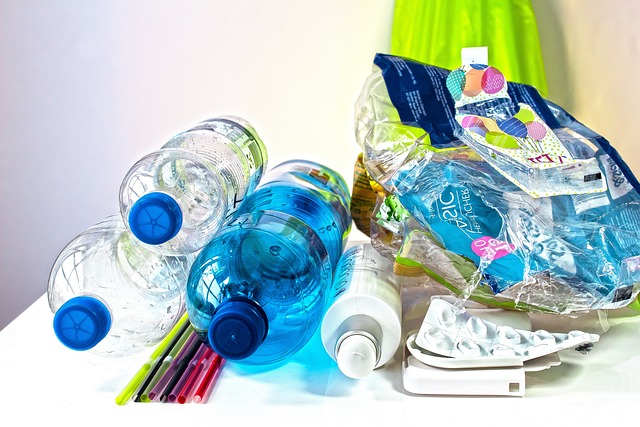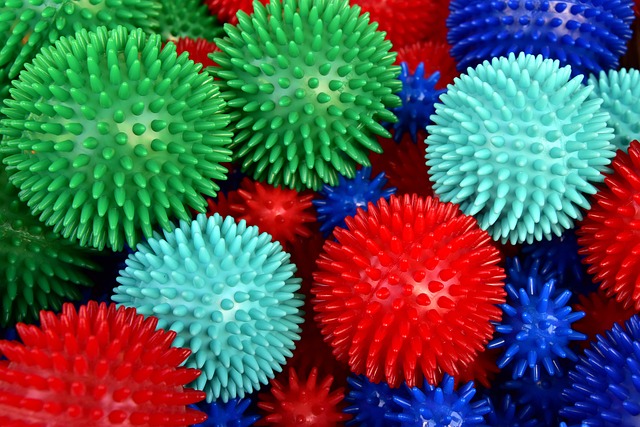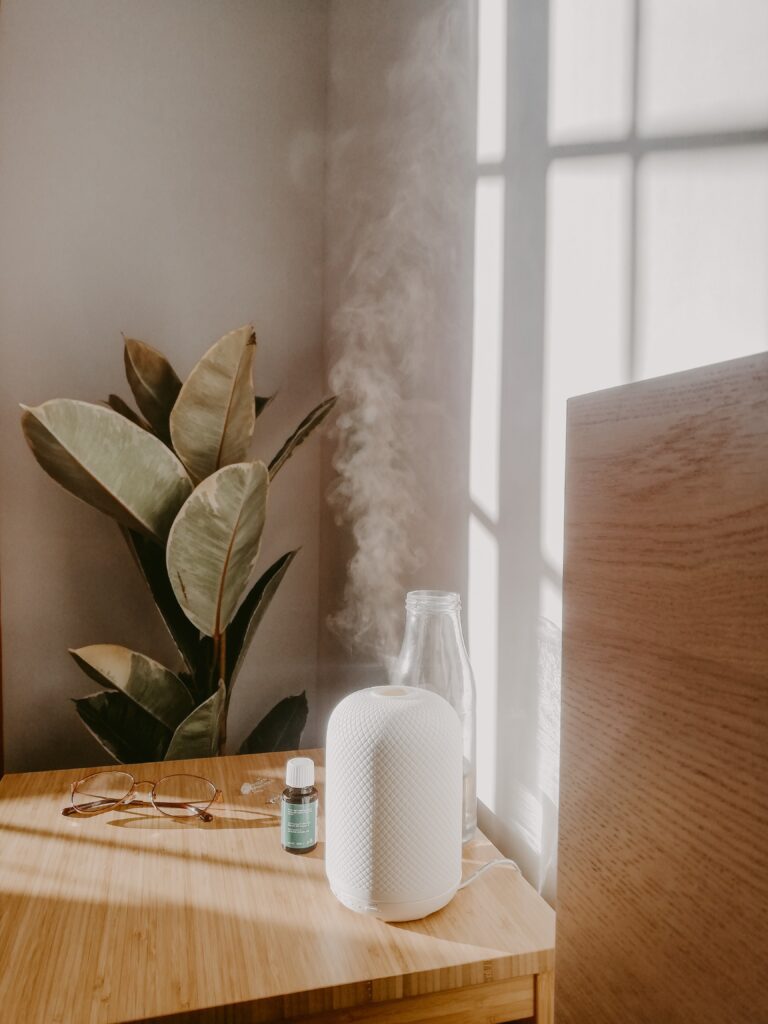Plastic is more than meets the eye – it can have a profound impact on your health so you must ask yourself, “What toxic chemicals are in plastic?” In our modern lives, plastic is an integral part of our lives with its convenience shaping our daily routines. From children’s toys to decorative clutter, even wellness products, we’re surrounded by plastic items, knowing fully well that it’s not biodegradable! But did you know that plastic is also a gift hamper of toxic chemicals? We touched on this topic briefly when looking at how many toxic chemicals are in the average home.
Plastic production is a process with one harmful toxic chemical after another. Studies have concluded that these chemicals aren’t fit for human consumption and can lead to a never-ending list of health diseases! So if you don’t know what you’re consuming with plastic items around you, it’s time to read this article. From lurking chemicals to unseen dangers, let’s delve into the effects plastic can have on your wellness!
Does Plastic Impact Your Health?

Yes, plastic does impact your health, well-being, and the environment in various ways. Given that the average human eats over 40 pounds of plastic in their lifetime and produces over 380 million tons of plastic every year, there is no surprise!
Plastic has been officially proven to cause:
- Hormonal disruptions,
- Respiratory diseases,
- Allergies and skin irritations,
- Cancer
- And so much more…
But that’s not the end of it just yet. Plastic is impacting not only you but the environment around you as well. Pollution is one of the many impacts plastic has on our environment. From marine animals dying from ingesting plastic items to soil contamination that leads to infertile land, the impact is only growing.
So how do you protect yourself from the harm of plastic? Let’s understand just what toxic chemicals are in plastic first!
What Toxic Chemicals Are In Plastic?
Bisphenol A
Bisphenol A or BPA is an industrial chemical used primarily in the production of polycarbonate plastics and epoxy resins. Particularly speaking, polycarbonate plastics are commonly used in products including:
- water bottles,
- food storage containers,
- baby bottles,
- the lining of metal food and drink containers.
BPA has been widely researched and the results have only proven how toxic this chemical can be for our wellness, the environment, and even marine life. When any liquid comes into contact with these plastics, BPA is leached out into the surroundings.
One study proved that BPA can act as an endocrine disrupter, leading to hormonal imbalances in consumers. Furthermore, it’s linked with a range of reproductive problems, such as infertility, and developmental issues in fetuses and infants.
If that doesn’t sound scary enough, BPA increases your risks of contracting certain types of cancers, obesity, and diabetes amongst other cardiovascular diseases!
The same effects can be seen in marine life where BPA contact has resulted in many marine animals facing long-term reproductive problems, leading to the endangerment of many species.
Phthalates
Have you noticed how some plastics are flexible and much softer than some other forms of plastic? Congratulations on coming into contact with Phthalates! Phthalates are toxic additives used in some plastics to improve their flexibility, durability, and transparency and to make them softer.
Phthalates can be found in various plastic items, including:
- vinyl flooring,
- shower curtains,
- toys,
- food packaging,
- personal care products.
Similar to BPA, Phthalates act as an endocrine disrupter, leading to a range of reproductive health issues. It can cause a lower sperm count, hormonal imbalance, and impaired fertility. Given its consistent use in children’s toys, children may face developmental delays and respiratory health problems as well!
Polyvinyl Chloride (PVC)
When answering what toxic chemicals are in plastic, it’s impossible to miss PVC. Polyvinyl Chloride (PVC) is a toxic chemical commonly found in certain types of plastic products such as pipes, vinyl flooring, window frames, cables, and medical devices.
The concern surrounding PVC stems from the additives used in its production, including lead, cadmium, and phthalates. These additives enhance its properties but can have detrimental effects on human health and the environment.
Health-wise, PVC and its additives pose risks through different pathways:
- Lead, commonly found in PVC products, is a neurotoxic heavy metal that can impair cognitive development, particularly in children.
- Cadmium, another additive, is a toxic metal associated with kidney damage and potential carcinogenic effects.
- Phthalates used in PVC can disrupt hormone function and have been linked to reproductive problems, hormonal imbalances, and developmental issues.
Polystyrene
Commonly known as Styrofoam, polystyrene is a type of plastic that contains a toxic chemical called styrene.
Polystyrene is lightweight, rigid, and has excellent insulating properties, making it a must-use item in many industries. From food containers, disposable plates, and cups to packaging materials, polystyrene is a commonly used form of plastic.
But did you know that when it comes into contact with heat, acidic foods, or beverages, it releases styrene? Styrene is classified as a possible human carcinogen by the International Agency for Research on Cancer (IARC) and has been linked to several health issues.
Studies have shown that the migration of styrene is increased when in contact with high temperatures or acidic substances.
Short-term exposure to styrene can cause respiratory irritation, irritation to the eyes and skin, and gastrointestinal effects. Long-term exposure to styrene has been associated with potential effects on the central nervous system, such as headaches, fatigue, and depression.
Formaldehyde
Formaldehyde is a colorless but toxic gas with a strong odor and is commonly used in the production of resins and adhesives. Formaldehyde is also used as a preservative in some plastics to increase their durability and resistance to heat. It’s a common element in laminates, particleboard, and plywood!
So how does formaldehyde impact your health?
Short-term exposure to high levels of formaldehyde can cause irritation to the eyes, nose, throat, and respiratory system. Prolonged or repeated exposure to formaldehyde has been associated with more serious health effects.
Since it’s classified as a proven human carcinogen, it has been linked to an increased risk of nasopharyngeal and sinonasal cancers. Formaldehyde exposure has also been associated with respiratory disorders, allergic reactions, and skin sensitization.
The gas itself is also harmful indoors as it can reduce indoor air quality, forcing people to inhale it in enclosed spaces.
Polybrominated Diphenyl Ethers (PBDEs)
Polybrominated diphenyl ethers (PBDEs) are a group of toxic chemicals used as flame retardants in certain types of plastic products. PBDEs are added to plastics, such as polyurethane foam, to reduce their flammability and meet fire safety regulations.
They have been widely used in products like:
- furniture,
- electronics,
- mattresses,
- carpets,
- textiles.
Studies have shown that exposure to PBDEs can have detrimental effects on human health. They are known to be endocrine disruptors, which means they can interfere with hormone function in the body.
PBDEs have been linked to adverse effects on the thyroid gland, affecting hormone regulation and potentially leading to developmental, reproductive, and neurological problems.
Some studies suggest associations between PBDE exposure and impaired cognitive development, impaired motor skills, increased impulsivity, decreased fertility and attention, and disruptions in the immune system.
Chlorofluorocarbons (CFCs)
While CFCs are not directly used in plastic production, some plastic materials, such as foams and insulation, may have contained CFCs as blowing agents during their manufacturing process in the past. The good news is that while CFCs are much more toxic to our environmental wellness, it’s been greatly phased out and replaced with other substances in plastic production!

How To Reduce Your Plastic Use
Opt for Reusable Alternatives
By choosing reusable alternatives, you can significantly reduce your plastic consumption. Reusable alternatives are often inexpensive and easily available, enabling them to gain popularity over the years! You can also replace single-use items with reusable options such as:
- Reusable Water Bottles – Carry a refillable water bottle to avoid purchasing plastic water bottles.
- Cloth Shopping Bags – Bring your cloth bags when shopping to avoid using plastic bags.
- Reusable Food Containers – Use glass or stainless steel containers instead of disposable plastic ones for storing food.
Say No To Single-Use Plastics
Let’s be honest, plastic is a huge part of your life whether you like it or not. From keeping your food fresh to storing clutter around the house and holding your water outdoors, plastic is everywhere.
Here’s where the concept of single-use plastic comes in. Considered use of reusable plastic items is much better for your wellness and the environment than single-use plastics! So, minimize your reliance on single-use plastics by refusing them whenever possible.
- Refuse Plastic Straws – Ask for drinks without straws or use reusable alternatives like stainless steel or bamboo straws.
- Skip Plastic Cutlery – Carry your own set of reusable utensils or opt for metal or wooden cutlery instead of plastic ones.
- Bring Your Coffee Cup – Use a travel mug or thermos for takeout beverages instead of disposable cups.
Choose Package-Free and Bulk Options
Did you know that packaging is the largest end-user segment that accounts for over 40% of the total global plastic use? Around 500 billion plastic bags are used to ship orders worldwide each year, making it an alarming aspect to control.
Reduce plastic packaging waste by selecting package-free and bulk products:
- Shop at Bulk Stores – Purchase grains, spices, and other products in bulk to avoid excess plastic packaging.
- Farmers’ Markets – Buy fresh produce directly from farmers or local markets to minimize plastic packaging.
Recycle and Dispose Responsibly
Proper recycling and disposal practices ensure that plastic waste is managed effectively. Reuse and recycling remain the biggest practices that can help lower plastic waste. Ultimately, it’s the best practice to avoid what toxic chemicals are in plastic! Here’s what you can do:
- Follow Local Recycling Guidelines – Familiarize yourself with your community’s recycling rules to ensure the correct disposal of plastic items.
- Explore Recycling Programs – Look for specialized recycling programs that accept specific types of plastic, such as bottle caps or plastic film.
Spread Awareness and Advocate for Change
Knowledge is power. Promote a plastic-free lifestyle by raising awareness and advocating for more sustainable alternatives! Here are a few practices to advocate for change:
- Educate Others – Share information about the environmental impacts of plastic pollution and the benefits of reducing plastic consumption.
- Support Sustainable Initiatives – Encourage businesses and policymakers to adopt plastic reduction measures, such as promoting reusable options or implementing plastic bag bans.
Final Thoughts
Plastic has been around for years and it’s importance is growing more than ever. But so is the impact it has on your health, wellness and the environment. Plastic includes many toxic chemicals that are released in the environment as well as your bodies, leading to health effects that can’t be easy cured.
While plastic’s impact on health varies, embracing a plastic-conscious lifestyle and advocating for improved management can pave the way for a healthier future. Join the journey towards wellness with simpleholisticwellbeing.com and take charge of your health today.
As for what toxic chemicals are in plastic, you know better now! Want to tell us about your experiences or others you know of? Please leave a comment below.





